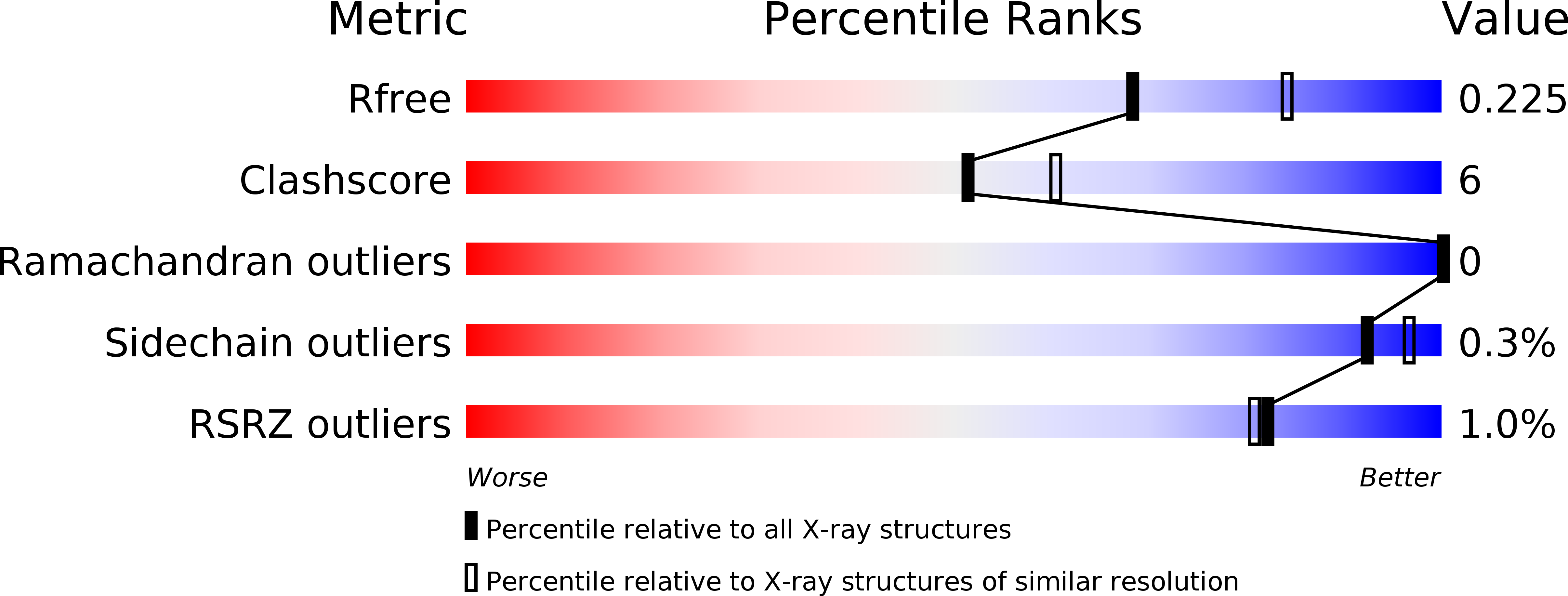Structural insights into methanol-stable variants of lipase T6 from Geobacillus stearothermophilus.
Dror, A., Kanteev, M., Kagan, I., Gihaz, S., Shahar, A., Fishman, A.(2015) Appl Microbiol Biotechnol 99: 9449-9461
- PubMed: 26026940
- DOI: https://doi.org/10.1007/s00253-015-6700-4
- Primary Citation of Related Structures:
4X6U, 4X71, 4X7B, 4X85 - PubMed Abstract:
Enzymatic production of biodiesel by transesterification of triglycerides and alcohol, catalyzed by lipases, offers an environmentally friendly and efficient alternative to the chemically catalyzed process while using low-grade feedstocks. Methanol is utilized frequently as the alcohol in the reaction due to its reactivity and low cost. However, one of the major drawbacks of the enzymatic system is the presence of high methanol concentrations which leads to methanol-induced unfolding and inactivation of the biocatalyst. Therefore, a methanol-stable lipase is of great interest for the biodiesel industry. In this study, protein engineering was applied to substitute charged surface residues with hydrophobic ones to enhance the stability in methanol of a lipase from Geobacillus stearothermophilus T6. We identified a methanol-stable variant, R374W, and combined it with a variant found previously, H86Y/A269T. The triple mutant, H86Y/A269T/R374W, had a half-life value at 70 % methanol of 324 min which reflects an 87-fold enhanced stability compared to the wild type together with elevated thermostability in buffer and in 50 % methanol. This variant also exhibited an improved biodiesel yield from waste chicken oil compared to commercial Lipolase 100L® and Novozyme® CALB. Crystal structures of the wild type and the methanol-stable variants provided insights regarding structure-stability correlations. The most prominent features were the extensive formation of new hydrogen bonds between surface residues directly or mediated by structural water molecules and the stabilization of Zn and Ca binding sites. Mutation sites were also characterized by lower B-factor values calculated from the X-ray structures indicating improved rigidity.
Organizational Affiliation:
Department of Biotechnology and Food Engineering, Technion-Israel Institute of Technology, Haifa, 32000, Israel.
















